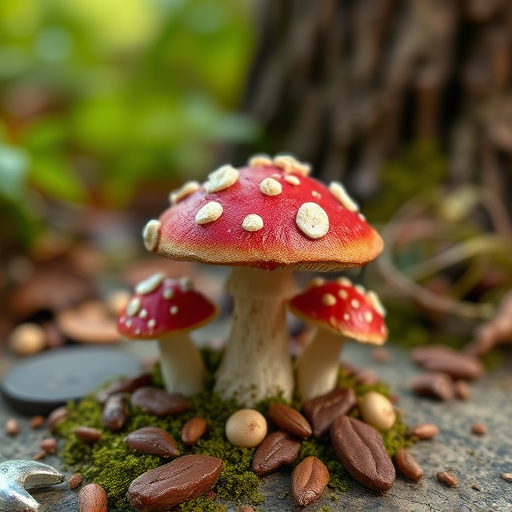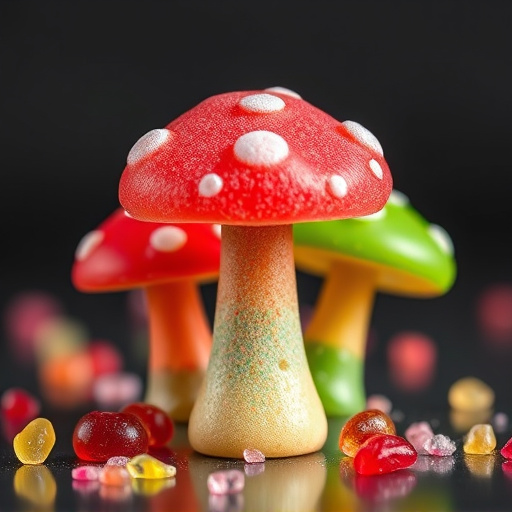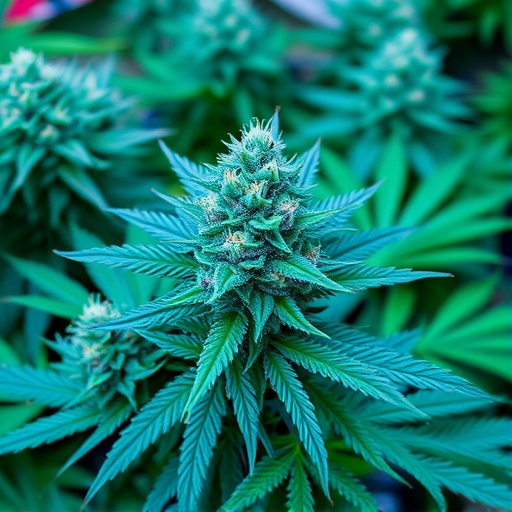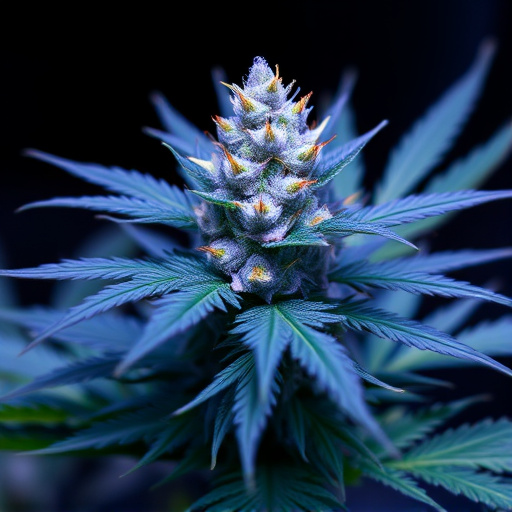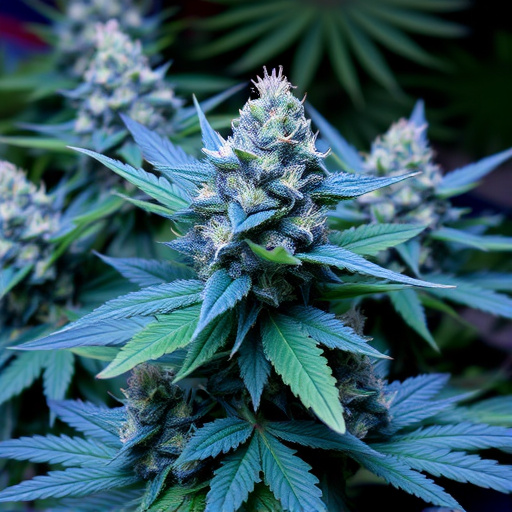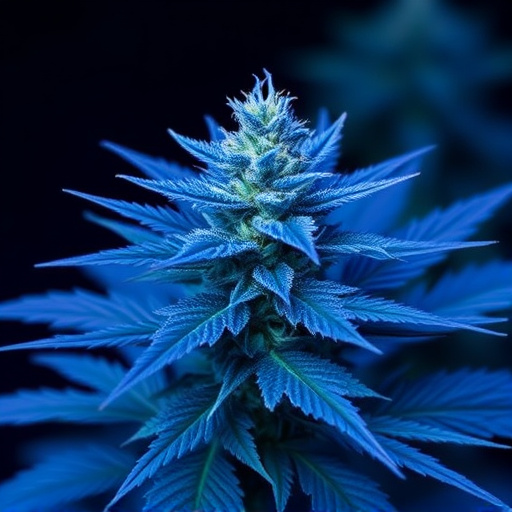Blue marijuana strains, recognized for their unique blue hue, are rich in therapeutic cannabinoids like CBD and THC. Popular for treating chronic pain, anxiety, and inflammation, these non-intoxicating strains offer medicinal benefits backed by growing scientific research. Their specific genetic makeup provides a balanced cannabinoid profile, making them preferred for controlled relief without the effects of THC. The rising popularity of blue strains has driven innovation in medical cannabis products, validating cannabis as a valuable treatment option alongside conventional medicine.
Cannabis flowers have gained significant attention for their potential medical benefits, driving interest in understanding their composition and various applications. This article explores how cannabis flowers, particularly blue marijuana strains, offer therapeutic potential. We delve into the scientific research and real-world evidence that highlight specific compounds within these flowers, such as cannabinoids, responsible for their medicinal properties. By examining blue marijuana strains, we uncover promising treatments for conditions ranging from pain to anxiety.
- Understanding Cannabis Flowers and Their Composition
- The Role of Blue Marijuana Strains in Medical Applications
- Scientific Research and Real-World Evidence for Cannabis Benefits
Understanding Cannabis Flowers and Their Composition
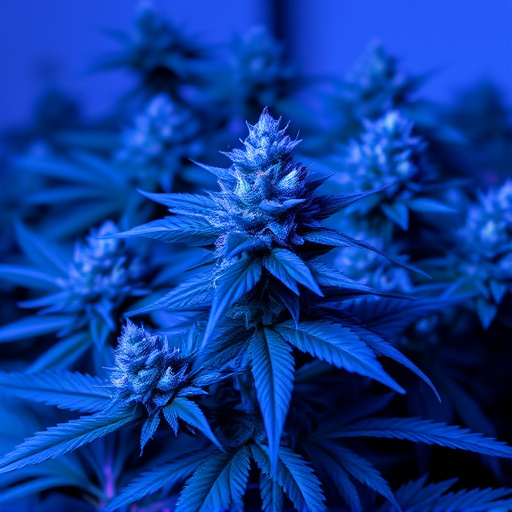
Cannabis flowers, also known as bud or cannabis sativa, are the most sought-after and well-known part of the plant for their medicinal properties. These flowers contain a complex array of chemical compounds, including a group of molecules called cannabinoids. The two most prominent cannabinoids are THC (tetrahydrocannabinol) and CBD (cannabidiol), each contributing uniquely to the plant’s therapeutic effects.
Blue marijuana strains, renowned for their vibrant hue and potent effects, are rich in these cannabinoids. The blue coloring often indicates a higher concentration of certain compounds, offering specific medical benefits. These strains have gained popularity due to their potential to alleviate various conditions such as chronic pain, anxiety, and inflammation. Understanding the composition of cannabis flowers is essential in harnessing their full potential for medicinal use.
The Role of Blue Marijuana Strains in Medical Applications
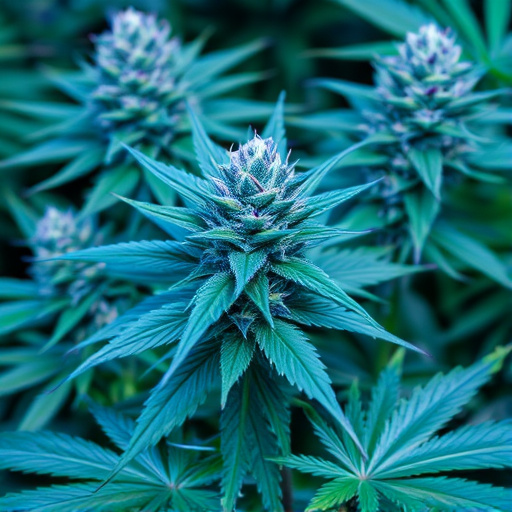
Blue marijuana strains, known for their distinctive hue and unique chemical composition, play a significant role in modern medical cannabis applications. These strains are particularly rich in cannabidiol (CBD), a non-psychoactive compound that has gained immense popularity due to its potential therapeutic benefits. CBD is renowned for its anti-inflammatory, analgesic, and anxiolytic properties, making it a valuable tool in managing various medical conditions. From chronic pain and muscle spasms to anxiety and sleep disorders, blue marijuana strains offer a natural alternative for patients seeking relief without the intoxicating effects of tetrahydrocannabinol (THC).
The specific genetic makeup of blue marijuana strains contributes to their balanced cannabinoid profile. This balance is key to their effectiveness in medicinal use. Many patients find that these strains provide a more mild and controlled experience, allowing them to benefit from cannabis without feeling overly sedated or disoriented. Moreover, the popularity of blue strains has spurred extensive research into CBD’s potential, leading to innovative medical cannabis products tailored for diverse health needs.
Scientific Research and Real-World Evidence for Cannabis Benefits
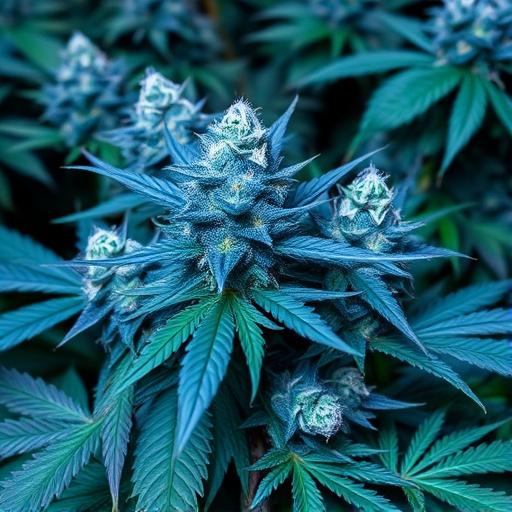
Scientific research has increasingly backed up the potential medical benefits of cannabis, with a growing body of evidence highlighting its therapeutic properties. Studies have explored various compounds found in blue marijuana strains, particularly cannabidiol (CBD) and tetrahydrocannabinol (THC), and their effects on different health conditions.
While THC is known for its psychoactive effects, CBD has garnered significant attention due to its non-psychoactive nature and potential to treat a range of ailments, including chronic pain, inflammation, anxiety, and epilepsy. Real-world applications of cannabis have shown promise in improving symptoms for patients with multiple sclerosis, cancer, post-traumatic stress disorder (PTSD), and more. These findings underscore the value of cannabis as a viable treatment option alongside conventional medicine.
Cannabis flowers, with their diverse compositions, offer significant medical potential. The unique properties of blue marijuana strains have shown promise in various studies, highlighting their role in treating a range of conditions. Scientific evidence continues to grow, underscoring the need for further exploration and integration of cannabis-based therapies into modern medicine, especially leveraging the specific benefits attributed to blue marijuana strains.




